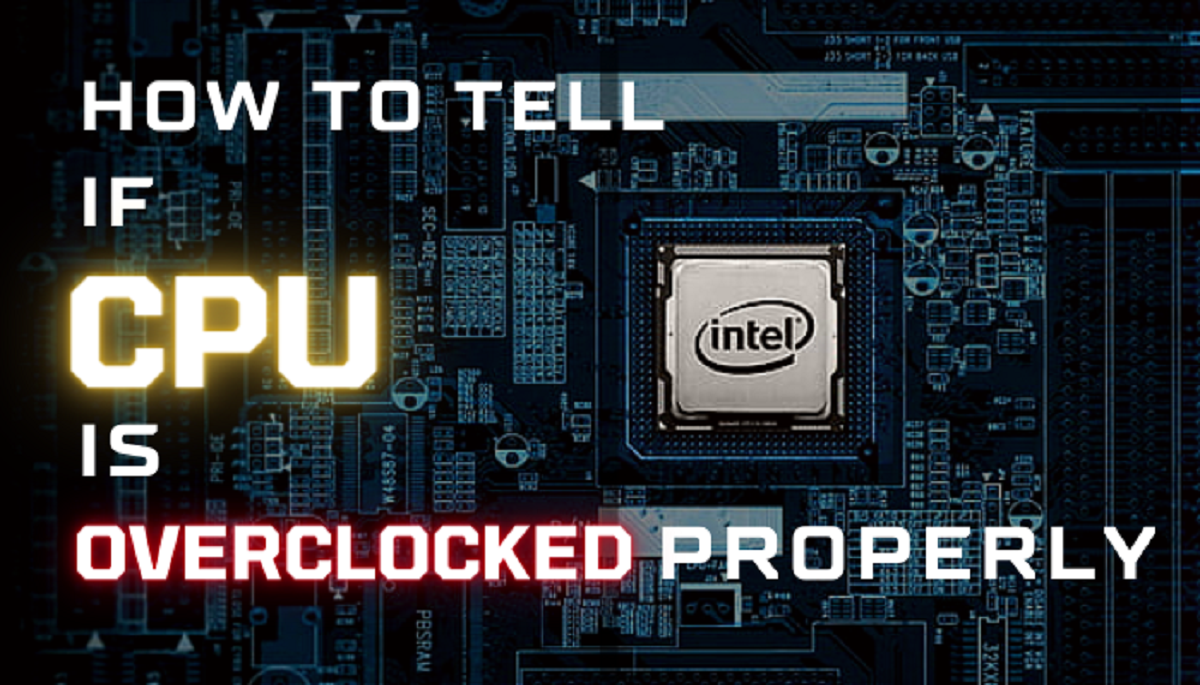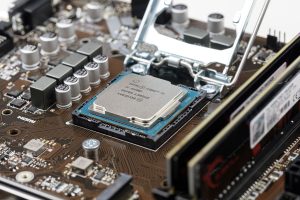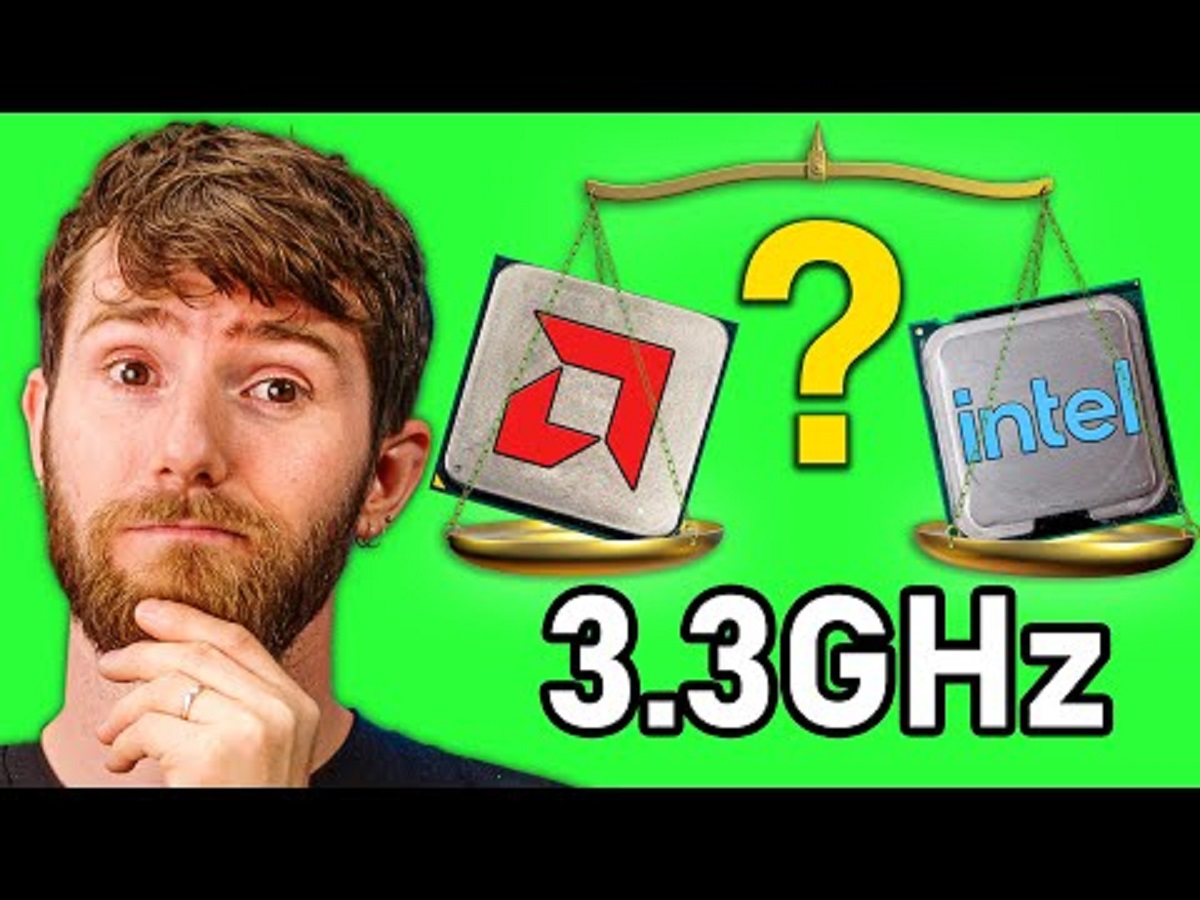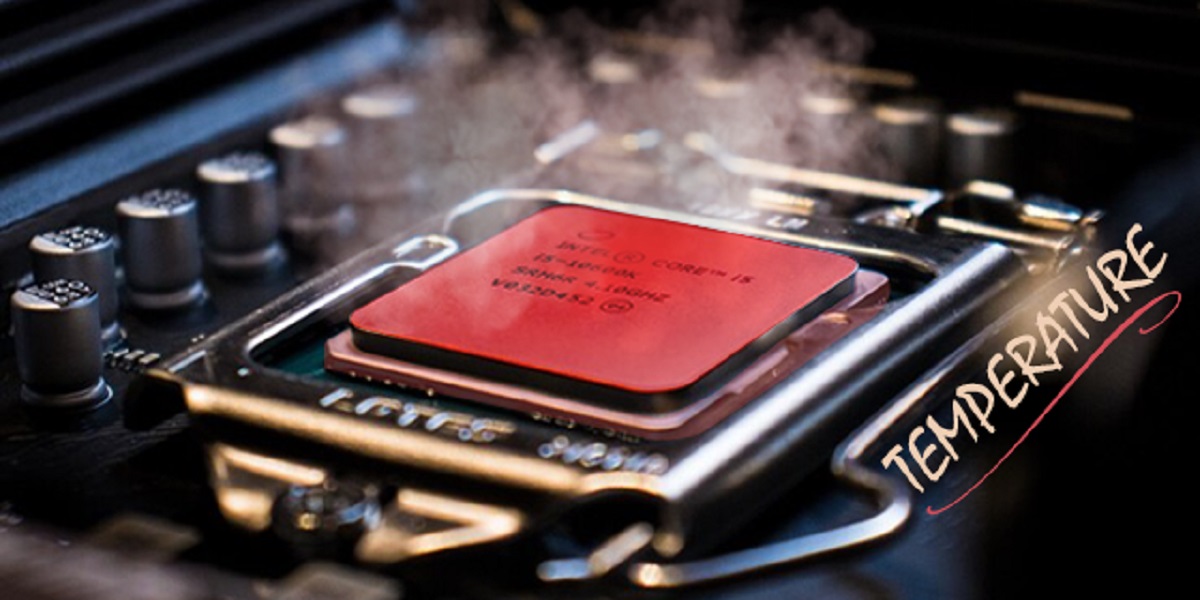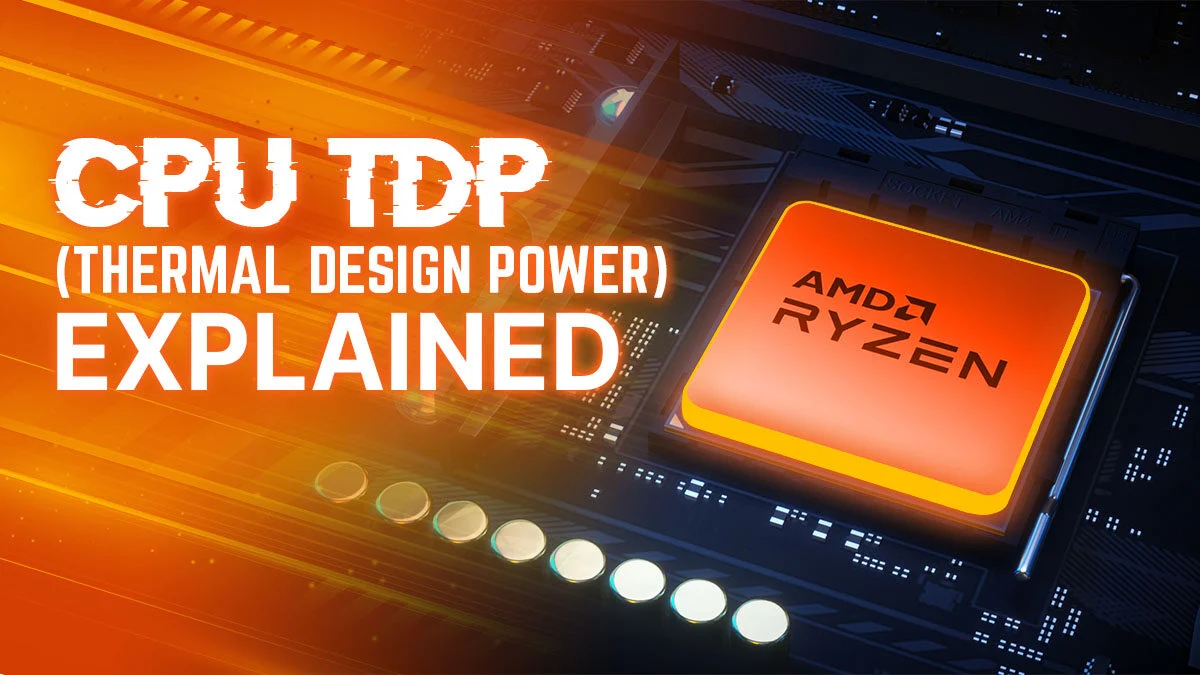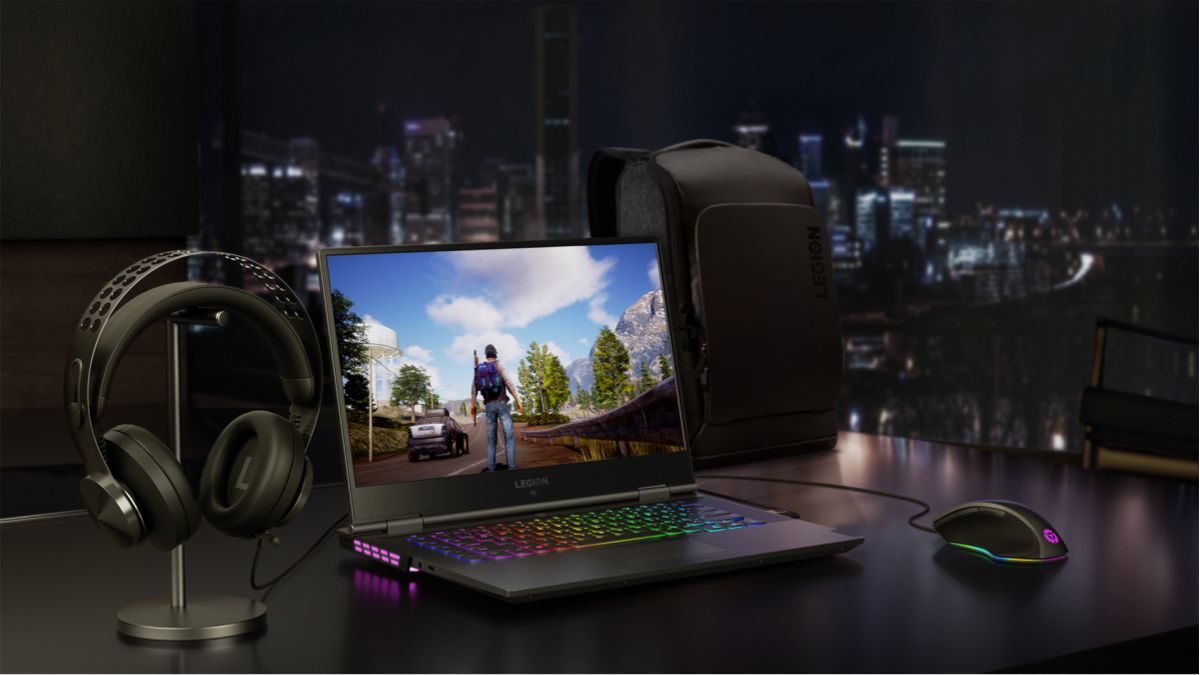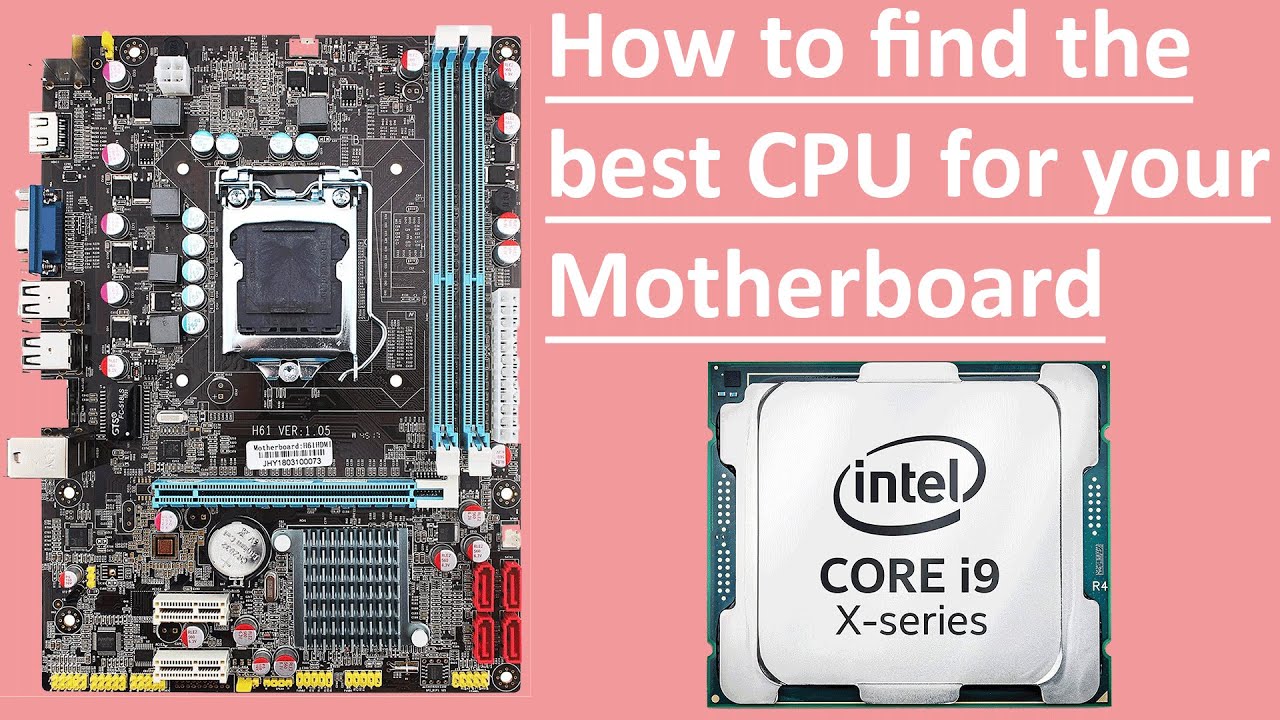Introduction
Welcome to the world of CPU overclocking, where enthusiasts push the limits of their computer’s performance. Whether you are a gamer looking for that extra edge or a professional seeking faster rendering times, overclocking your CPU can provide a significant boost in speed.
But what exactly is CPU overclocking? Put simply, it is the process of increasing the clock speed of your CPU beyond its factory-set specifications. By doing so, you can achieve higher levels of performance and potentially push your system to its limits.
While overclocking can bring numerous benefits, it is important to understand the risks involved. Pushing your CPU beyond its limits can lead to instability, excessive heat production, and even permanent damage if not done correctly. Therefore, it is crucial to know if your CPU is currently overclocked or running at its stock speed.
In this article, we will guide you through various methods to determine if your CPU is overclocked. From accessing BIOS/UEFI settings to using CPU-Z software, we will cover each method in detail. By the end, you will be equipped with the knowledge to identify whether your CPU is overclocked and make informed decisions about your system’s performance.
What is CPU Overclocking?
CPU overclocking is the process of increasing the clock speed of a central processing unit (CPU) beyond its original specifications set by the manufacturer. The clock speed represents the number of cycles a CPU can execute per second, measured in gigahertz (GHz).
When a CPU is overclocked, it runs at a higher clock speed than it was intended to operate. This can result in increased performance and faster processing times for various tasks, including gaming, video editing, and heavy computational workloads.
Overclocking achieves higher clock speeds by modifying the CPU’s multiplier, voltage, and frequency settings. By increasing these values, the CPU can execute more instructions per second, leading to improved performance.
It is important to note that not all CPUs are capable of being overclocked. Unlocked CPUs, often labeled with a “K” suffix (e.g., Intel Core i7-9700K), are specifically designed for overclocking and allow users to make adjustments to clock speeds and voltages. On the other hand, locked CPUs come with fixed clock speeds and limited overclocking potential.
Overclocking can offer significant performance gains, especially for tasks that heavily rely on CPU performance. For example, gamers can experience higher frame rates and smoother gameplay, while content creators can reduce rendering times and improve productivity.
However, there are risks associated with CPU overclocking. The increased power consumption and higher operating temperatures can put additional stress on the CPU and other components, potentially leading to stability issues and reduced lifespan. Overclocking should be done with caution and proper cooling measures, ensuring the system stays within safe operating limits.
Before attempting to overclock your CPU, it is essential to have a good understanding of the process and the potential risks involved. We will now explore various methods to check if your CPU is overclocked, so you can make informed decisions about optimizing your system’s performance while maintaining stability.
Benefits and Risks of CPU Overclocking
Overclocking your CPU can offer several benefits, but it’s important to weigh them against the potential risks involved. Let’s take a closer look at both sides of the coin:
Benefits of CPU Overclocking
Increased Performance: The primary advantage of CPU overclocking is a boost in performance. By increasing the clock speed, your CPU can execute instructions faster, leading to improved responsiveness, faster data processing, and smoother multitasking.
Enhanced Gaming Experience: Gamers can benefit significantly from overclocking their CPUs. Higher clock speeds can result in improved frame rates, reduced input delay, and smoother gameplay. This can provide a competitive edge and a more immersive gaming experience.
Quicker Rendering and Encoding: Content creators, such as video editors and 3D animators, can greatly benefit from overclocking. By speeding up the CPU’s processing capabilities, rendering and encoding times can be significantly reduced, saving precious time on professional projects.
Cost-Effective Performance Gains: Overclocking allows users to extract more performance from their existing hardware without the need to upgrade to a more expensive CPU. This can provide a cost-effective solution to squeezing out extra processing power.
Risks of CPU Overclocking
Increased Heat Generation: Overclocking your CPU increases its power consumption, leading to higher heat generation. If not adequately managed, this can result in excessive temperatures, potentially causing damage to the CPU and other components. Proper cooling measures, such as high-quality heatsinks and efficient airflow, are essential when overclocking.
Stability Issues: Overclocking can make your system unstable if not done properly. The increased clock speeds and voltages can push components beyond their limits, leading to crashes, freezes, and unexpected shutdowns. It’s crucial to find a balance between performance and stability to ensure reliable operation.
Reduced Lifespan: Running a CPU at higher clock speeds for extended periods can reduce its lifespan. The increased power and heat put additional stress on the CPU, potentially shortening its longevity. It’s important to monitor temperatures and ensure that they remain within safe limits.
Judicial Warranty Voiding: Overclocking your CPU often voids the manufacturer’s warranty. This means that if any damage occurs to the CPU while overclocked, you won’t be able to claim warranty assistance. It is important to consider this before proceeding with overclocking.
While the benefits of CPU overclocking can be enticing, it is crucial to approach it with caution and weigh the potential risks. By understanding the advantages and drawbacks, you can make an informed decision about whether to overclock your CPU and how to do it safely.
How to Check if Your CPU is Overclocked
Now that you understand the basics of CPU overclocking and the potential benefits and risks, it’s time to determine whether your CPU is currently overclocked. Here are several methods you can use to check if your CPU is running at its stock speed or if it has been overclocked:
Method 1: BIOS/UEFI Settings
Access your computer’s BIOS or UEFI settings by restarting your system and pressing the designated key (e.g., Del, F2, or F10) during boot. Once in the BIOS/UEFI menu, look for any adjustments related to CPU clock speed, multiplier, or voltage. If these settings are set higher than the manufacturer’s specifications, your CPU is likely overclocked. However, be cautious when making changes in the BIOS/UEFI settings, as any improper modification can result in system instability.
Method 2: CPU-Z Software
CPU-Z is a popular tool for monitoring and gathering information about your CPU. Download and install CPU-Z from the official website. Launch the program and navigate to the “CPU” tab. Here, you will find details about your CPU, including the “Core Speed” and “Multiplier.” Compare these values to the stock specifications provided by the manufacturer. If the Core Speed and Multiplier are higher, it indicates that your CPU is overclocked.
Method 3: Windows Task Manager
If you are using a Windows operating system, you can check your CPU’s clock speed through the Task Manager. Right-click on the taskbar and select “Task Manager” from the context menu. In the Task Manager window, click on the “Performance” tab. Under the “CPU” section, you will find the current clock speed of your CPU. Compare this value to the manufacturer’s specifications to determine if your CPU is overclocked.
Method 4: Manufacturer’s Software
Sometimes, the manufacturer of your CPU may provide software specifically designed to monitor and adjust CPU settings. Visit the manufacturer’s official website and search for any available software utilities related to CPU management. Install the software and navigate to the appropriate section to check if your CPU is overclocked.
By using these methods, you can easily determine if your CPU is overclocked or running at its stock speed. Remember that checking the clock speed alone is not enough to guarantee proper overclocking. The stability and temperatures of your system also need to be considered for a successful overclocking experience.
Method 1: BIOS/UEFI Settings
One of the primary methods to check if your CPU is overclocked is by accessing the BIOS (Basic Input/Output System) or UEFI (Unified Extensible Firmware Interface) settings of your computer. These settings allow you to customize various hardware configurations, including CPU clock speeds, multipliers, and voltages.
To access the BIOS or UEFI settings, you will need to restart your system and press the designated key during the boot process. Common keys to enter the BIOS/UEFI menu are Del, F2, or F10, although the actual key may vary depending on your computer’s manufacturer. Keep an eye out for a prompt or message that indicates the correct key to press.
Once you have entered the BIOS/UEFI menu, navigate to the section related to CPU settings. This section may be labeled differently depending on your motherboard’s manufacturer, but it is usually located under the “Advanced” or “Overclocking” tab. Look for options such as “CPU Ratio,” “Multiplier,” or “Frequency” that determine the CPU clock speed.
Check the values of these settings and compare them to the stock specifications provided by the CPU manufacturer. If the settings are higher than the default values, it indicates that your CPU is overclocked. Be cautious, as modifying these settings without proper knowledge can result in system instability or even damage to your hardware.
If you are unsure about the stock specifications of your CPU, you can find this information on the manufacturer’s website or through CPU databases such as Intel’s ARK or AMD’s Processor Specifications page.
Additionally, some BIOS/UEFI menus may provide information about the current clock speeds and voltages of your CPU. Take note of these values and compare them to the stock specifications to determine if overclocking is taking place.
Remember, tinkering with BIOS/UEFI settings can have consequences if done incorrectly, so exercise caution and refer to your motherboard’s manual or online resources for guidance. If you are not comfortable making changes in the BIOS/UEFI settings, it is best to seek assistance from experienced users or consult with a professional.
By using the BIOS/UEFI settings method, you can accurately determine if your CPU is overclocked. This information is valuable in understanding the current state of your system and can help you make informed decisions when it comes to optimizing performance or reverting to stock settings if necessary.
Method 2: CPU-Z Software
CPU-Z is a reliable and widely used software tool that provides detailed information about your CPU, motherboard, and other hardware components. Not only does it offer comprehensive details about your system, but it also allows you to monitor various parameters, including CPU clock speed, multiplier, and voltage. By using CPU-Z, you can easily determine if your CPU is overclocked.
To begin, you’ll need to download and install CPU-Z from the official website (https://www.cpuid.com/softwares/cpu-z.html). Once installed, launch the program and navigate to the “CPU” tab. Here, you will find a wealth of information about your CPU, including its model, architecture, cache sizes, and more.
Focus on two key parameters: “Core Speed” and “Multiplier.” The “Core Speed” represents the current clock speed of your CPU, while the “Multiplier” indicates the multiplier applied to the base clock frequency to achieve that speed.
Compare the “Core Speed” and “Multiplier” values with the stock specifications provided by the CPU manufacturer. If the Core Speed and Multiplier are higher than the stock values, it indicates that your CPU is overclocked. On the other hand, if these values match the stock specifications, your CPU is running at its default speed.
In addition to the “CPU” tab, CPU-Z provides valuable information on other system components like memory and motherboard. This information is useful for troubleshooting or gathering system specifications.
It’s important to note that CPU-Z is a monitoring tool and does not allow you to make changes to your CPU settings. If you want to modify your CPU’s clock speed or other parameters, you’ll need to utilize other software or access the BIOS/UEFI settings, as discussed in the previous section.
By using CPU-Z, you can easily and accurately check if your CPU is overclocked. This lightweight and user-friendly tool provides valuable insights into your system’s configuration and helps you make informed decisions about your CPU’s performance.
Method 3: Windows Task Manager
If you are using a Windows operating system, you can check your CPU’s clock speed through the built-in Task Manager. The Task Manager provides real-time information about your system’s performance, including CPU usage, clock speed, and other relevant metrics.
To access the Task Manager, right-click on the taskbar and select “Task Manager” from the context menu. Alternatively, you can press the Ctrl + Shift + Esc keys together to open the Task Manager directly.
Once the Task Manager window opens, click on the “Performance” tab at the top. In the Performance tab, you will see several options on the left side. Click on “CPU” to display detailed information about your CPU.
In the CPU section, you will find the current clock speed of your CPU listed under the “Base Speed” or “Speed” column. This value represents the default clock speed of your CPU, also known as the stock speed.
To determine if your CPU is overclocked, compare the displayed clock speed in the Task Manager with the stock specifications provided by the CPU manufacturer. If the displayed clock speed is higher than the stock speed, it indicates that your CPU is overclocked.
Keep in mind that the Task Manager only provides the current clock speed and does not offer information about CPU voltage or other overclocking parameters. For a more comprehensive analysis of your CPU’s overclocking status, consider using other methods, such as accessing the BIOS/UEFI settings or utilizing specialized software tools like CPU-Z.
It’s worth noting that while the Task Manager is a convenient and readily available tool, it may not always display the most accurate or detailed information about your CPU. However, for a quick check on your CPU’s clock speed, it can provide valuable insights.
By utilizing the Windows Task Manager, you can easily check the current clock speed of your CPU and quickly determine if it is running at its stock speed or if it has been overclocked.
Method 4: Manufacturer’s Software
Some CPU manufacturers offer specialized software utilities that provide detailed information and control over their processors. These software tools are specifically designed to monitor and adjust CPU settings, including clock speed, voltage, and other overclocking parameters. By using the manufacturer’s software, you can easily determine if your CPU is overclocked.
To begin, visit the official website of your CPU manufacturer and search for any available software utilities related to CPU management. These tools may have different names depending on the manufacturer. For example, Intel provides Intel Extreme Tuning Utility (XTU) and AMD offers Ryzen Master.
Once you have found and downloaded the appropriate software, install it on your system following the provided instructions. Launch the software and navigate to the section that displays information about your CPU and its current settings.
The manufacturer’s software will typically provide details such as current clock speed, multiplier, voltage, and temperature of your CPU. Compare the displayed values with the stock specifications provided by the CPU manufacturer to determine if your CPU is running at its default speed or if it has been overclocked.
Aside from displaying information, some manufacturer’s software may also provide options to adjust CPU settings and apply overclocking profiles. However, exercise caution when making changes, as improper adjustments can lead to system instability or damage to your hardware.
It is important to note that not all CPU models have dedicated software provided by the manufacturer. If you are unable to find any software specific to your CPU, you can rely on other methods, such as accessing the BIOS/UEFI settings or using general-purpose monitoring tools like CPU-Z.
By utilizing the manufacturer’s software, you can easily access detailed information about your CPU and determine if it is overclocked. This method allows for more specific control and monitoring of your CPU’s settings and can be a valuable resource for optimizing performance and maintaining stability.
Signs of an Overclocked CPU
If you suspect that your CPU may be overclocked, there are several signs or indicators you can look out for to confirm your suspicions. While these signs are not definitive proof of overclocking, they can provide strong indications that your CPU is running at higher clock speeds than its stock specifications. Here are some common signs to watch for:
Increased CPU Temperatures:
One of the telltale signs of an overclocked CPU is higher than normal temperatures. Overclocking generates more heat as the CPU is operating at higher clock speeds and voltages. If you notice significantly higher CPU temperatures during idle or under load, this could indicate that your CPU is overclocked.
Frequent System Crashes or Instability:
Overclocking can put a strain on the CPU and other system components. If your system experiences frequent crashes, freezes, or unexpected shutdowns, it could be a sign of an unstable overclock. Overclocked CPUs may not be able to handle the increased clock speeds and voltages consistently, resulting in system instability.
Increased Power Consumption:
Overclocking tends to increase the power consumption of the CPU. If you notice a significant increase in your system’s power consumption without any other hardware changes, it could be an indication that your CPU is overclocked. This can be observed by monitoring your system’s power usage through software or with a power meter.
Benchmark Performance:
Running performance benchmarks can be an effective way to gauge if your CPU is overclocked. Compare your system’s benchmark scores against the average scores for CPUs of the same model. If your CPU consistently achieves higher scores than expected, it suggests that it is operating at higher clock speeds due to overclocking.
Unusual CPU Voltage:
Overclocking often requires an increase in CPU voltage to support the higher clock speeds. Monitoring tools like CPU-Z or manufacturer’s software can display the current CPU voltage. If the voltage is set to a higher value than the stock specification, it indicates that your CPU has been overclocked.
Remember that these signs provide strong indications of an overclocked CPU but are not foolproof evidence. If you are unsure, it is recommended to use multiple methods, such as accessing BIOS/UEFI settings or utilizing software tools, to confirm whether your CPU is overclocked.
Understanding the signs of an overclocked CPU is crucial for maintaining system stability and making informed decisions about your hardware’s performance. If you suspect that your CPU is overclocked and you did not initiate the overclocking process yourself, it is advisable to consult with an expert to ensure the optimal functioning of your system.
Conclusion
Checking if your CPU is overclocked is an essential step in understanding your system’s performance and ensuring stability. Overclocking can provide significant benefits, such as increased speed and improved gaming or rendering capabilities. However, it also comes with potential risks, including increased heat generation, stability issues, and reduced lifespan.
In this article, we discussed several methods to determine if your CPU is overclocked. Accessing the BIOS/UEFI settings allows you to check CPU clock speed, multiplier, and voltage. CPU-Z software provides detailed information about your CPU, including the current clock speed and multiplier. The Windows Task Manager gives you a quick view of the CPU clock speed. Manufacturer’s software, if available, offers specific CPU monitoring and adjustment options.
Additionally, we explored the signs of an overclocked CPU, such as increased temperatures, frequent system crashes, higher power consumption, abnormal benchmark performance, and unusual CPU voltage.
It is important to note that if your CPU is overclocked and you did not initiate the overclocking process yourself, it may indicate that your system is running out of spec or has been modified by someone else. In such cases, it is recommended to consult with an expert to ensure the proper functioning and stability of your system.
Ultimately, determining if your CPU is overclocked allows you to make informed decisions about your system’s performance. Whether you choose to push your CPU to its limits or revert to its stock speed, it is essential to find the right balance between performance gains and system stability.
Remember to approach overclocking with caution and proper knowledge. Ensure that your system is adequately cooled and monitored to prevent overheating or damage.
By understanding the methods to check if your CPU is overclocked and considering the potential benefits and risks, you are equipped to optimize your system’s performance and make informed decisions regarding your computer’s hardware configuration.







